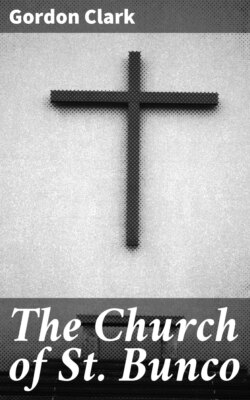Читать книгу The Church of St. Bunco - Gordon Clark - Страница 6
На сайте Литреса книга снята с продажи.
CHAPTER III.
ОглавлениеTable of Contents
DR. QUIMBY'S MOST DISTINGUISHED PATIENT.
Dr. Quimby was at the height of his career during the early days of our Civil War. Among his patients at that time was one who has since become the most celebrated of them, and who now bears the name of Mary Baker Glover Eddy. Then, however, the patient was known as Mary M. Patterson—an incident which occurred through her being a very energetic and pious woman, who has attracted to herself a considerable variety of husbands.[13] It was in 1862, says Dr. Quimby's biographer, Mrs. A. G. Dresser, "that Mrs. Eddy, author of Science and Health, was associated with Dr. Quimby; and I well remember the very day when she was helped up the steps of his office on the occasion of her first visit. She was cured by him, and afterward became very much interested in his theory. But she put her own construction on much of his teaching, and developed a system of thought which differed radically from it."
Mrs. Mary Baker G. Patterson (since Mrs. Eddy), was greatly surprised at her cure, and naturally grateful for it. She at once said so in print. It was in an issue of the Portland Evening Courier, of November 7th, 1862. Her account was this:
"Three weeks ago I quitted my nurse and sick-room en route for Portland. The belief of my recovery had died out of the hearts of those who were most anxious for it. With this mental and physical depression, I first visited P. P. Quimby, and in less than one week from that time I ascended by a stairway of one-hundred and eighty-two steps to the dome of the City Hall, and am improving ad infinitum.... I have employed electro-magnetism and animal magnetism, and for a brief period I have felt relief ... but in no instance did I get rid of a return of all my ailments, because I had not been helped out of the error in which opinions involve us. My operator believed in disease independent of mind; hence I could not be wiser than my teacher. But now I can see, dimly at first, and only as trees walking, the great principle which underlies Dr. Quimby's faith and works; and just in proportion to my right perception of truth is my recovery. This truth, which he opposes to the error of giving intelligence to matter and placing pain where it never placed itself, if received understandingly, changes the currents of the system to their normal action, and the mechanism of the body goes on undisturbed. That this is a science capable of demonstration becomes clear to the minds of those patients who reason upon the process of their cure. The truth which he establishes in the patient cures him (although he may be wholly unconscious thereof), and the body, which is full of light, is no longer in disease."
The communication of Mrs. Mary Baker G. Eddy—then Mrs. Mary M. Patterson—which she published in the Portland Courier, was criticised, the next day, November 8th, 1862, by the Portland Advertiser. In reply to that paper she said:
"P. P. Quimby stands upon the plain of wisdom with his truth. Christ healed the sick, but not by jugglery or with drugs. As the former speaks as never man before spake, and heals as never man healed since Christ, is he not identified with truth, and is not this the Christ which is in him?... P. P. Quimby rolls away the stone from the sepulcher of error, and health is the resurrection.... But light shineth in darkness, and the darkness comprehendeth it not."[14]
Dr. Quimby having died on the 16th of January, 1866, Mrs. M. B. G. Patterson—not to be Mrs. M. B. G. Patterson Eddy until 1867—"sent to me," says Mr. Julius Dresser in his True History of Mental Science, "a copy of a poem she had written to his memory." With the poem was sent the following letter:
